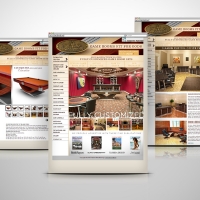











The following is an article that helped me when I first started building Goliath Graffix. I was young, had great ideas and creativity but really had no idea on how to conduct myself with clients. Sure it seems simple and obvious but how often do we make the simple and obvious our principles? Not so much. It’s easier to give advice than heeding it right? That is why I made it a point to make the ideas in this article my business principles. It helped me quite a bit and hopefully it can help you too. Enjoy!
How much is a good client worth?
More than you realize. The average cost of getting a new client today runs about 20% of creative billings! And profitability can vary more than 100% depending on how efficiently jobs are produced. No wonder that good clients—the easy to work with ones who actually call you—are in demand.What motivates a client to call again and again? Good work, surely. But there are also other factors, equally important.
Busy businesses are the ones most sought out by other businesses.You can’t change reality, but you can change the perception of reality. Never talk about inactivity, instead talk about what you are doing. Discretely drop the names of prestigious clients whenever appropriate. Increase your visibility through promotions, probono work, or community activities. The more successful you appear, the more successful you’ll become.
Everyone, clients included, prefers to work with someone who is cheerful and pleasant. Having this reputation helps particularly in getting the larger, longer, more profitable projects. In addition, there’s another benefit: the more clients like you personally, the easier it will be for them to accept any strong opinions or unusual creative approaches.
Taking an interest beyond what’s required to do the project—being genuinely curious about a client’s business—is a sure way to earn trust and confidence. Clients often assume you need to know more than is actually necessary. And because they’re so involved in their business, they often want to share their interests with you. Equally significant, the more knowledgeable you become, the better the position you’ll be in to suggest additional ways you can help them out.
Every client wants to relax, believing their project is in capable hands. So give them this confidence. Leave little to doubt. The more you appear in control, the more the client will come to trust your judgment, and the easier things will proceed. Conversely, the more nervousness or lack of confidence you display, the more the client will question your judgments, work, and prices.
Show up for appointments on time,even early. Never late. Deliver what you promise, when you promise. And never let them see you sweat. There’s little that worries clients more than missed deadlines, cover ups, or lackadaisical attitudes. If you do mess up, be 100% honest about it. Most clients want you to succeed and will forgive an honest mistake or two.
Take nothing for granted. In many cases the client has only the most superficial knowledge of what you do. They expect you to tell them how you work, the process, the schedule, and when and what will be required of them. Also, to keep them informed of all changes, and provide options when appropriate. Cater to their idiosyncrasies. And check all the details as if a mistake could cost you your career.
It’s human nature: we all like those who take an interest in us, and clients are no exception. So don’t make the mistake of being so business like that you ignore the human component of a client relationship. Be particularly careful not to neglect individuals at lower echelons in an organization.They not only influence how assignments proceed today, they may move up to a more influential position tomorrow.
When we discuss creativity we often define it in terms of talent, originality, fashion, trends, and praise by creative peers and opinion leaders. Clients, however, usually think differently. To them, creativity is usually defined as an original way to sell their product or communicate their ideas. When you are with them, make sure you talk their language.
Good clients expect you to handle a project in the way you believe best. But when a client disagrees with your approach, you have to be flexible enough to willingly make changes. After all, every project is nothing more than a collection of subjective procedures and results. Never forget: they pay the bill, so they have the right to have it done their way.
If you do, chances are that’s where more of it will end up. Big or small, today more clients than ever are budget conscious. Sticking to a budget figure is important. Finding novel ways to reduce it is even more so. The challenge is to convince them that you are frugal about their money while at the same time being fussy about the quality you provide.
Goliath Graffix
36 West Colorado Boulevard #208
Pasadena, CA 91105
Phone (626) 921-5808 | Fax (626) 628-1712
info@goliathgraffix.com